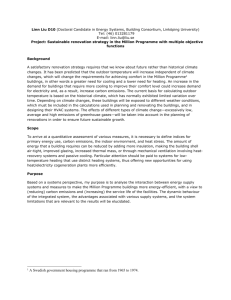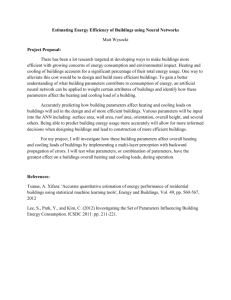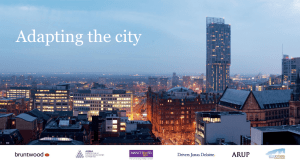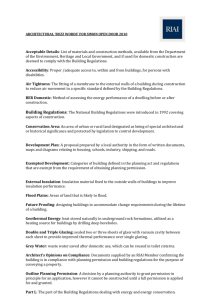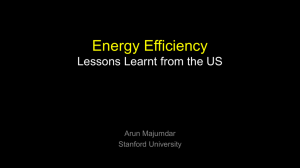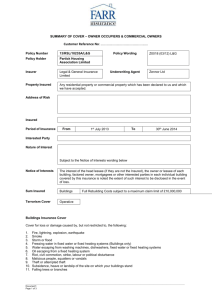附件1 征集领域: Proposals should be focused on one of the
advertisement
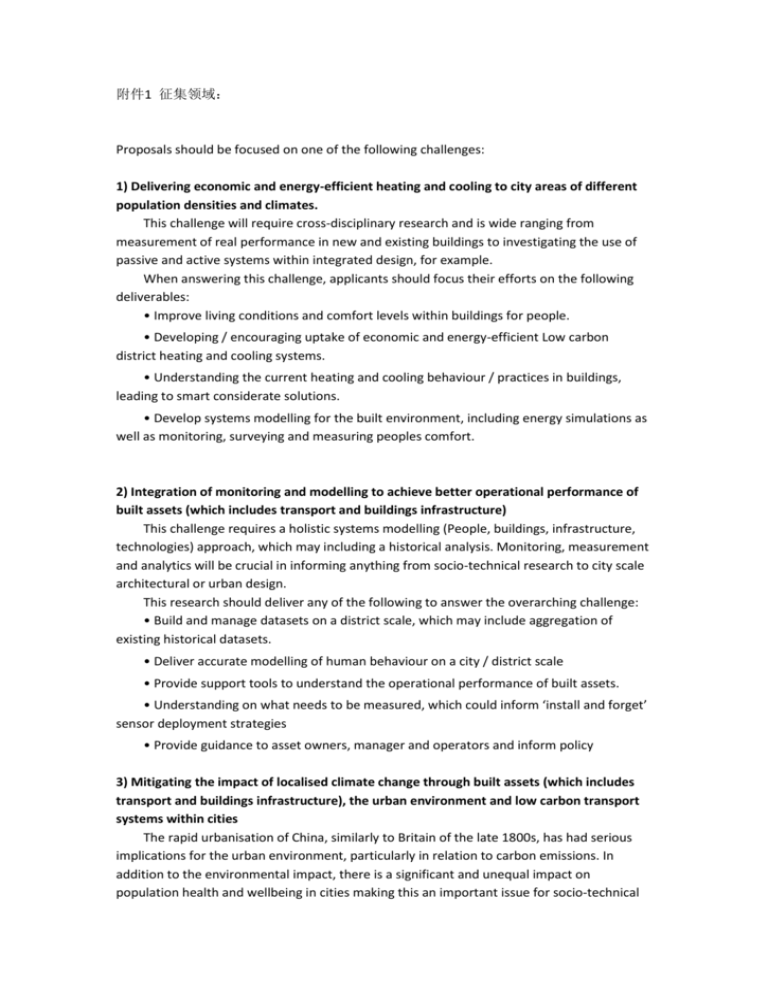
附件1 征集领域: Proposals should be focused on one of the following challenges: 1) Delivering economic and energy-efficient heating and cooling to city areas of different population densities and climates. This challenge will require cross-disciplinary research and is wide ranging from measurement of real performance in new and existing buildings to investigating the use of passive and active systems within integrated design, for example. When answering this challenge, applicants should focus their efforts on the following deliverables: • Improve living conditions and comfort levels within buildings for people. • Developing / encouraging uptake of economic and energy-efficient Low carbon district heating and cooling systems. • Understanding the current heating and cooling behaviour / practices in buildings, leading to smart considerate solutions. • Develop systems modelling for the built environment, including energy simulations as well as monitoring, surveying and measuring peoples comfort. 2) Integration of monitoring and modelling to achieve better operational performance of built assets (which includes transport and buildings infrastructure) This challenge requires a holistic systems modelling (People, buildings, infrastructure, technologies) approach, which may including a historical analysis. Monitoring, measurement and analytics will be crucial in informing anything from socio-technical research to city scale architectural or urban design. This research should deliver any of the following to answer the overarching challenge: • Build and manage datasets on a district scale, which may include aggregation of existing historical datasets. • Deliver accurate modelling of human behaviour on a city / district scale • Provide support tools to understand the operational performance of built assets. • Understanding on what needs to be measured, which could inform ‘install and forget’ sensor deployment strategies • Provide guidance to asset owners, manager and operators and inform policy 3) Mitigating the impact of localised climate change through built assets (which includes transport and buildings infrastructure), the urban environment and low carbon transport systems within cities The rapid urbanisation of China, similarly to Britain of the late 1800s, has had serious implications for the urban environment, particularly in relation to carbon emissions. In addition to the environmental impact, there is a significant and unequal impact on population health and wellbeing in cities making this an important issue for socio-technical study. Especially considering, environmental problems transcend national boundaries. In order to answer this challenge, research will be required in a range of areas, including: The correlation between urban form and microclimate, option appraisal against various scenarios including extreme events as well as understanding and mitigating against the effect of short term vulnerability (5-10 year) and long term change (up to 100 years) on built assets. In addition, research could be carried out in order to enhancing city wide health and wellbeing. This research could lead to a number of outcomes, including: Mitigation and adaptation strategies, the impact on local urban climate of build asset design as well as deliver robust built assets that are resilient, flexible and adaptable. Proposals may also investigate low carbon transport, smart / intelligent traffic management systems (including Internet of Things (IoT) usage) as well as ways to retrofit existing systems to make them less carbon intensive. This research could deliver a range of outcomes, including: Road maps for science and technology policy, understanding and managing transitions, recommendation for demonstration and monitoring as well as providing evidence of the potential of alternative low carbon transport deployment. 4) How can we develop new built assets (which includes transport and buildings infrastructure) that allows flexibility to meet future needs in China Chinese urban development continues to grow at an enormous rate. It is estimated that 1 billion people will live in an urban environment in China by 2025. The research required to fulfil this challenge includes: Investigating green infrastructure of urban space / parks, rain and waste water management which could inform policy and city planning; Modelling simulations on a city scale; Understanding historical perspective, uptake studies and future needs. When answering this challenge, applicants should consider focusing their efforts on the following deliverables: • Design guidance and software tools • Use of new materials • Resilient and adaptive building fabric • Consider how current infrastructure will produce future needs

